GMC Yukonyukon XL 2001 Owner's Manual
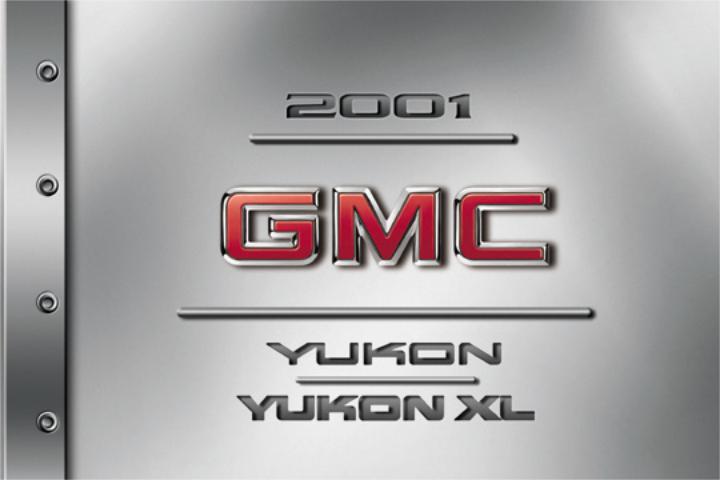

Every 2001 Yukon/Yukon XL
under warranty is backed with the
following services:
Courtesy
Transportation
Trip Routing
1-800-GMC-8782
(For vehicles purchased in Canada,
call 1-800-268-6800)
that provides in an emergency:
 Free lockout assistance
Free lockout assistance
 Free dead-battery assistance
Free dead-battery assistance
 Free out-of-fuel assistance
Free out-of-fuel assistance
 Free flat-tire change
Free flat-tire change
 Emergency towing
Emergency towing

2001 GMC Yukon/Yukon XL
Owner's Manual
Litho in U.S.A. |
© Copyright General Motors Corporation 2000 |
Part Number X2116 A First Edition |
All Rights Reserved |
i
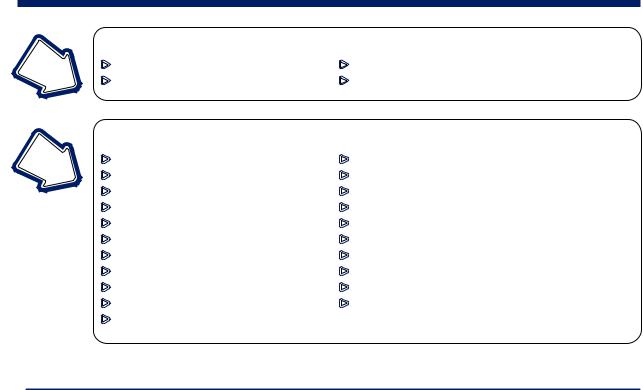
Table of Contents
Section 1
Section 2
|
Seats and Restraint Systems |
Seats and Seat Controls |
Air Bag Systems |
Safety Belts |
Restraint Systems for Children |
|
Features and Controls |
Windows |
Exterior and Interior Lamps |
Keys and Door Locks |
Mirrors |
Keyless Entry System (If Equipped) |
Storage Compartments |
Liftgate |
Convenience Net/Cargo Cover/Luggage Carrier (If Equipped) |
Automatic Transmission |
Accessory Power Outlets |
Four-Wheel Drive (If Equipped) |
OnStar® System (If Equipped) |
Parking Brake |
Sunroof (If Equipped) |
Tilt Wheel (If Equipped) |
HomeLink® Transmitter (If Equipped) |
Turn Signal/Multifunction Lever |
Instrument Panel, Warning Lights and Gages |
Windshield Wipers |
Message Center |
Cruise Control |
|
ii
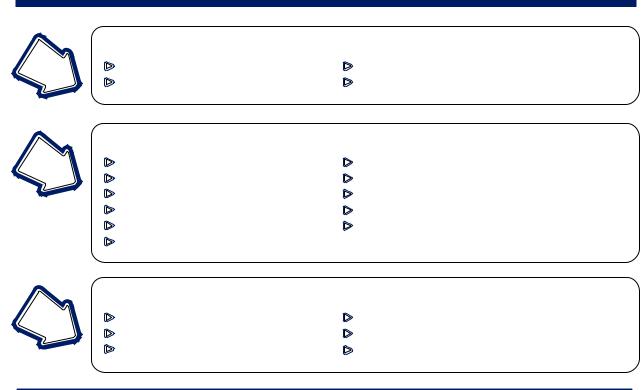
Table of Contents (cont'd)
Section 3
Section 4
Section 5
Comfort Controls and Audio Systems
Heating and Air Conditioning |
Radio/Cassette Player/CD Player |
Setting the Radio Clock |
Radio Theft-Deterrent Feature (If Equipped) |
Your Driving and the Road
Your Driving, the Road and Your Vehicle |
Driving Tips for Various Road Conditions |
Defensive Driving |
Off-Road Driving |
Drunken Driving |
Recreational Vehicle Towing |
Control of a Vehicle |
Loading Your Vehicle |
Braking |
Towing a Trailer |
Steering |
|
|
Problems on the Road |
Hazard Warning Flashers |
Engine Overheating |
Jump Starting |
Changing a Flat Tire |
Towing Your Vehicle |
If You're Stuck |
iii
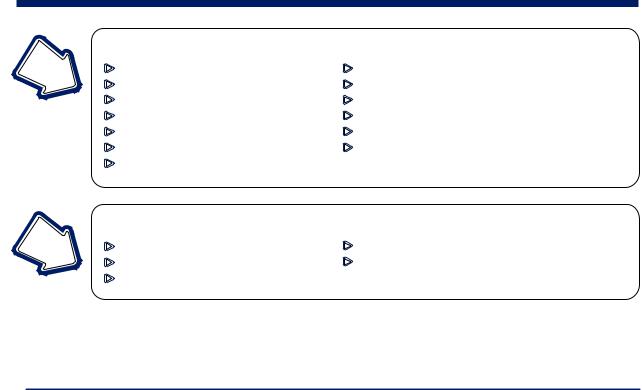
|
Table of Contents (cont'd) |
|
|
Service and Appearance Care |
|
Section 6 |
Fuel |
Windshield Wiper Blade Replacement |
|
Checking Fluids and Lubricants |
Tires and Wheels |
|
GM Oil Life System™ |
Appearance Care |
|
Engine Air Cleaner/Filter |
Electrical System/Fuses and Circuit Breakers |
|
Passenger Compartment Air Filter (If Equipped) |
Capacities and Specifications |
|
Brakes |
Normal Maintenance Replacement Parts |
|
Bulb Replacement |
|
|
Maintenance Schedule |
|
Section 7 |
Scheduled Maintenance |
Recommended Fluids and Lubricants |
|
Owner Checks and Services |
Maintenance Records |
|
Periodic Maintenance Inspections |
|
iv
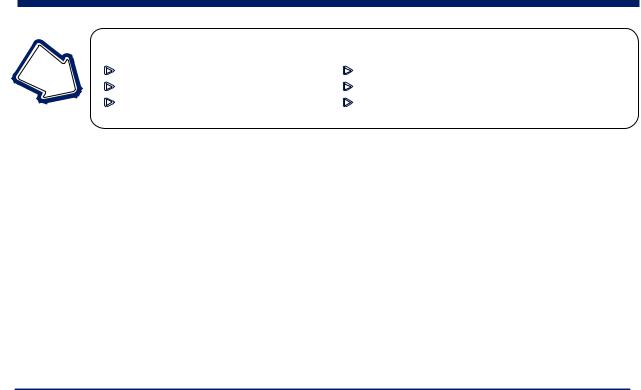
Table of Contents (cont'd)
Section 8
Section 9
Customer Assistance Information
Customer Satisfaction Procedures |
Warranty Information (See Warranty Manual) |
Customer Assistance Offices |
Reporting Safety Defects on page 8-10 |
Roadside Assistance and Courtesy Transportation |
Service Publications |
Index
In the Index you will find an alphabetical listing of almost every subject in this manual. You can use it to quickly find something you want to read.
Please refer to the last page of this manual for your Service Station Guide
v

GENERAL MOTORS, GM, the GM Emblem, GMC, the GMC Emblem and the name YUKON are registered trademarks of General Motors Corporation.
This manual includes the latest information at the time it was printed. We reserve the right to make changes after that time without further notice. For vehicles first sold in Canada, substitute the name ªGeneral Motors of Canada Limitedº for GMC whenever it appears in this manual.
Please keep this manual in your vehicle, so it will be there if you ever need it when you're on the road.
If you sell the vehicle, please leave this manual in it so the new owner can use it.
We support voluntary technician certification.
For Canadian Owners Who Prefer a
French Language Manual:
Aux propriétaires canadiens: Vous pouvez vous procurer un exemplaire de ce guide en français chez votre concessionaire ou au:
DGN Marketing Services Ltd.
1577 Meyerside Dr.
Mississauga, Ontario L5T 1B9
vi

How to Use this Manual
Many people read their owner's manual from beginning to end when they first receive their new vehicle. If you do this, it will help you learn about the features and controls for your vehicle. In this manual, you'll find that pictures and words work together to explain
things quickly.
Safety Warnings and Symbols
You will find a number of safety cautions in this book. We use a box and the word CAUTION to tell you about things that could hurt you if you were to ignore the warning.
 CAUTION:
CAUTION:
These mean there is something that could hurt you or other people.
In the caution area, we tell you what the hazard is. Then we tell you what to do to help avoid or reduce the hazard. Please read these cautions. If you don't, you or others could be hurt.
vii

You will also find a circle with a slash through it in this book. This safety symbol means ªDon't,º ªDon't do thisº or ªDon't let this happen.º
Vehicle Damage Warnings
Also, in this book you will find these notices:
NOTICE:
These mean there is something that could damage your vehicle.
In the notice area, we tell you about something that can damage your vehicle. Many times, this damage would not be covered by your warranty, and it could be costly. But the notice will tell you what to do to help avoid the damage.
When you read other manuals, you might see CAUTION and NOTICE warnings in different colors or in different words.
You'll also see warning labels on your vehicle. They use the same words, CAUTION or NOTICE.
viii
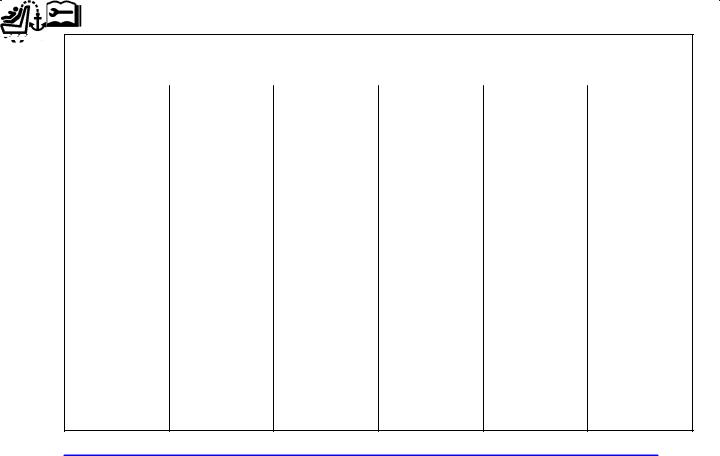
Vehicle Symbols
These are some of the symbols you may find on your vehicle. Also see ªWarning Lights and Gagesº in the Index.
For example, these symbols are used on an original battery:
CAUTION
POSSIBLE
INJURY
PROTECT
EYES BY
SHIELDING
CAUSTIC
BATTERY
ACID COULD
CAUSE
BURNS
AVOID
SPARKS OR
FLAMES
SPARK OR
FLAME
COULD
EXPLODE
BATTERY
These symbols are important for you and your passengers whenever your vehicle is driven:
CHILD
RESTRAINT
TOP STRAP
ANCHOR
DOOR LOCK
UNLOCK
FASTEN
SEAT
BELTS
POWER
WINDOW
AIR BAG
These symbols have to do with your lamps:
MASTER
LIGHTING
SWITCH
TURN
SIGNALS
PARKING
LAMPS
HAZARD
WARNING
FLASHER
DAYTIME
RUNNING
LAMPS
FOG LAMPS
These symbols are on some of your controls:
WINDSHIELD
WIPER
WINDSHIELD
WASHER
WINDSHIELD
DEFROSTER
REAR
WINDOW
DEFOGGER
VENTILATING FAN
These symbols are used on warning and indicator lights:
ENGINE
COOLANT
TEMP
BATTERY
CHARGING
SYSTEM
BRAKE
COOLANT
ENGINE OIL
PRESSURE
ANTI-LOCK
BRAKES
Here are some other symbols you may see:
FUSE
LIGHTER
HORN
FUEL
ix
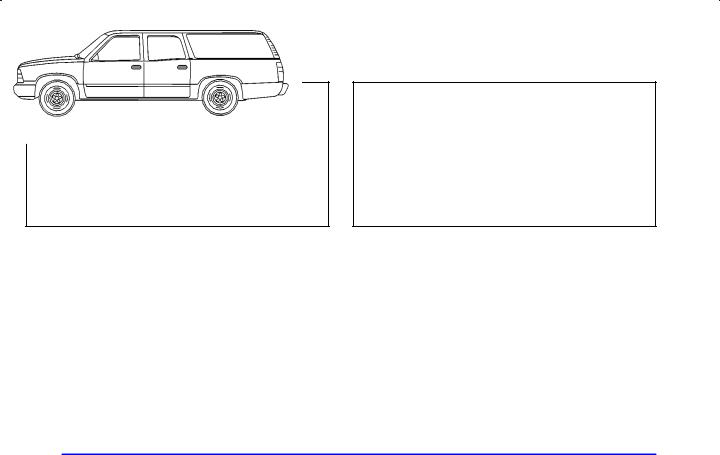
Model Reference
This manual covers these models:
Yukon |
Yukon XL |
x
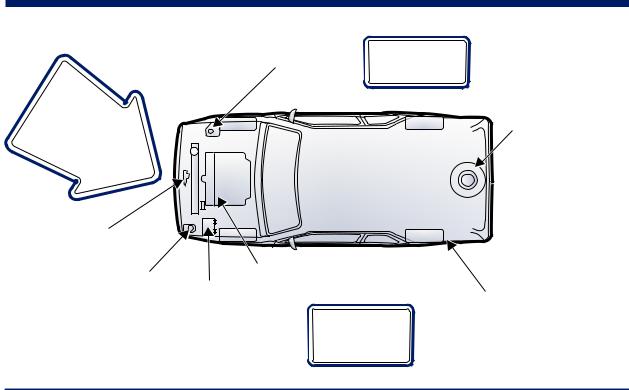
Service Station Guide
For
a More
Detailed Look at
What's Under the Hood
See Section 6
Hood Release
See Section 6
Cooling System |
Tire Pressure |
See Section 5 |
|
|
See Section 6 |
Spare Tire Pressure
See Section 5
Windshield Washer |
|
Engine Oil Dipstick |
Fuel |
|
Battery |
See Section 6 |
|||
Fluid |
Use unleaded only. |
|||
See Section 6 |
|
|||
See Section 6 |
Oil Viscosity |
See Section 6 |
||
|
||||
|
|
Engine Oil |
for octane ratings. |
|
|
|
|
See Section 6

Section 1 Seats and Restraint Systems
Here you'll find information about the seats in your vehicle and how to use your safety belts properly. You can also learn about some things you should not do with air bags and safety belts.
1-2 |
Seats and Seat Controls |
|
1-38 |
Rear Seat Passengers |
|
||||
1-15 |
Safety Belts: They're for Everyone |
|
1-42 |
Rear Safety Belt Comfort Guides for |
1-20 |
Here Are Questions Many People Ask |
|
|
Children and Small Adults |
|
About Safety Belts -- and the Answers |
|
1-45 |
Children |
1-21 |
How to Wear Safety Belts Properly |
|
1-49 |
Restraint Systems for Children |
1-21 |
Driver Position |
|
1-62 |
Older Children |
1-27 |
Safety Belt Use During Pregnancy |
|
1-65 |
Safety Belt Extender |
1-28 |
Right Front Passenger Position |
|
1-65 |
Checking Your Restraint Systems |
1-28 |
Air Bag Systems |
|
1-65 |
Replacing Restraint System Parts |
1-37 |
Center Passenger Position |
|
|
After a Crash |
|
|
|
|
|
1-1

Seats and Seat Controls
This section tells you about the seats -- how to adjust them, and fold them up and down. It also tells you about reclining front seatbacks and head restraints.
Manual Front Seat
 CAUTION:
CAUTION:
You can lose control of the vehicle if you try to adjust a manual driver's seat while the vehicle is moving. The sudden movement could startle and confuse you, or make you push a pedal when you don't want to. Adjust the driver's seat only when the vehicle is not moving.
If your vehicle has a manual bucket or split bench seat, you can adjust it with this lever located at the front of the seat.
Lift the lever at the front of the seat to unlock it. Using your body, slide the seat to where you want it. Then, release the lever and try to move the seat with your body in order to make sure the seat is locked into place.
1-2

Manual Cushion Tilt (If Equipped)
If your vehicle has this feature, you can raise or lower the front of the driver's or passenger's seat with this lever located at the inside edge of the seat. To raise or lower the front of the seat, move the lever up or down in a continuous motion until the cushion reaches the desired height.
Manual Lumbar Control (If Equipped)
If your vehicle has a lumbar adjustment, you can increase or
decrease lumbar support in an area of the lower seatback. The control is located on the outboard side of the front seats.
To increase support, turn the knob towards the front of the vehicle. Operating effort can be reduced if you lean forward slightly while turning the knob.
To decrease support, turn the knob towards the rear of the vehicle.
1-3
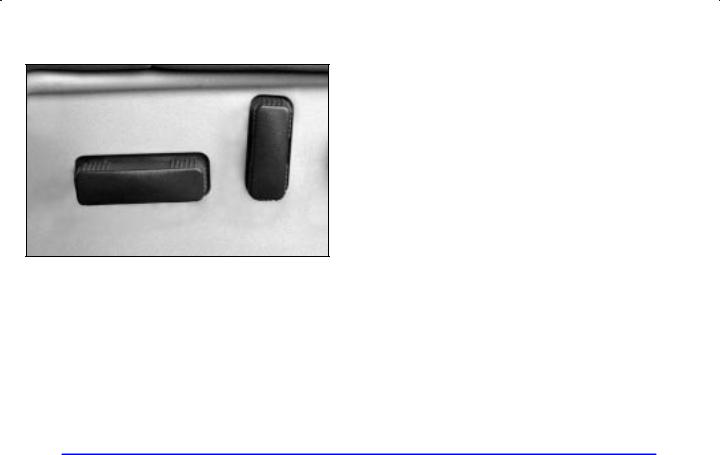
Power Seat(s) (If Equipped)
Horizontal Control: If your vehicle has a power seat, you can adjust it with these controls located at the outboard edges of the seats.
Raise or lower the front of the seat cushion by raising or lowering the forward edge of the button.
Move the seat forward or rearward by moving the whole button forward or rearward.
Raise or lower the rear of the seat cushion by raising or lowering the rear edge of the button.
Moving the whole button up or down raises or lowers the entire seat cushion.
Vertical Control: If your vehicle has the power reclining seats, you can use this button to adjust the angle of the seatback. Move the reclining front seatback rearward or forward by moving this button toward the rear or the front of the vehicle. See ªReclining Seatbacksº in the Index for further information.
1-4
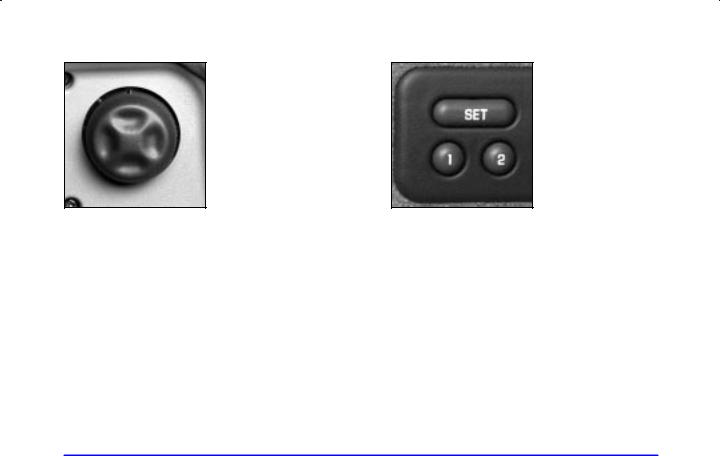
Power Lumbar Control (If Equipped)
To increase or decrease support, press and hold the front or rear of the control. Let go of the control when the lower seatback reaches the desired level of support.
You can also reshape the side wing area of the lower seatback for more lateral support.
To increase or decrease support, press and hold the top or bottom of the control. Let go of the control when the lower seatback reaches the desired level of support.
Memory Seat (If Equipped)
The memory function controls the driver's seat cushion and recliner positions and is located on the driver's door trim panel.
It does not store the lumbar or back support positions.
To set your memory seat, do the following:
1.Adjust the driver's seat to your desired position.
2.Press the SET button and then press the 1 or 2 side of the memory control within five seconds.
When your vehicle is in PARK (P), press the 1 or 2 button of the memory control to recall the seat setting.
To do the same thing for a second driver, follow the preceding steps, but press the other number of the memory control. The memory feature only works when the transmission is in PARK (P).
1-5

Heated Front Seats (If Equipped) |
Reclining Seatbacks |
If your vehicle has heated front seats, the ignition must be in RUN for them to operate.
The control for the driver's side heated seat is located on the driver's side door panel. The control for the passenger's side heated seat is located on the passenger's side door panel.
To activate the heated seats, press the button once for the HI heat setting. Press the button again for the LO heat setting. To turn off the heated seats, press the button a third time.
An indicator light on the button will illuminate for each heat setting anytime the heated seats are operating.
The heated front seats will be canceled after the ignition is turned to OFF. If you still want to use the heated front seat feature after you restart your vehicle, you will need to press the heated seat button again.
To adjust the front seatback, lift the lever located on the outboard side of the seat. Release the lever to lock the seatback where you want it. Lift the lever again upward and the seatback will go to an upright position.
If your vehicle has power seats with a power recliner, see ªPower Seatsº in the Index for further information on how to operate the reclining seatback feature.
1-6

But don't have a seatback reclined if your vehicle is moving.
 CAUTION:
CAUTION:
Sitting in a reclined position when your vehicle is in motion can be dangerous. Even if you buckle up, your safety belts can't do their job when you're reclined like this.
The shoulder belt can't do its job. In a crash, you could go into it, receiving neck or other injuries.
The lap belt can't do its job either. In a crash the belt could go up over your abdomen. The belt forces would be there, not at your pelvic bones. This could cause serious internal injuries.
For proper protection when the vehicle is in motion, have the seatback upright. Then sit well back in the seat and wear your safety belt properly.
1-7

Head Restraints
Slide the head restraint up or down so that the top of the restraint is closest to the top of your ears. This position reduces the chance of a neck injury in a crash.
 CAUTION:
CAUTION:
If a head restraint is not installed on the seatback or stored in the vehicle properly, it could be thrown about the vehicle in a crash or sudden maneuver. People in the vehicle could be injured. Remove the head restraints only when you need to fold the seat, and be sure that the head restraints are stored securely in the space provided on the folded up seat cushion. When the seat is returned to the passenger position, be sure the head restraints are installed properly.
1-8

Rear Seats
Utility: The rear seat may have a 60/40 split seat which may be folded down to give you more cargo space. The rear seatbacks may be equipped with rearward folding head restraints. When the seatback is being folded down, the head restraint will automatically fold rearward to allow a flat load floor for cargo or entry to the third row seat (if equipped).
Suburban/Yukon XL: The second row rear seat of Suburban/Yukon XL models may have a 60/40 split seat or rear bucket seats. Either side of the rear seat may be folded down to give you more cargo space.
On both Utility and Suburban/Yukon XL models with 60/40 split bench seats, before folding the rear seat back down on the driver's side, insert the center occupant lap belt latch plate into the loop provided on the underside of the folded forward seat cushion. You may have to adjust the location of the latch plate on the webbing so that it reaches the loop. Stowing in this loop will reduce the chances of damaging and soiling the belt. Remember to remove the latch plate from the loop before the seat is returned to the passenger position.
On Suburban/Yukon XL models with rear bucket seats, the head restraints need to be removed in order to fold the rear seat. To do this, lift the head restraints up until they stop. Press in the button on the side of the head restraint guide cap and lift up on the head restraint. This will need to be repeated on the other cap.
The head restraint can be removed and stored in the space provided on the folded up seat cushion.
On Suburban/Yukon XL models with bucket seats, the seatbacks can be reclined. To adjust the seatback, pull the lever, located at the base of the back, forward.
Release the lever to lock the seatback where you want it. Pull the lever again and the seatback will go to an upright position. In order to fold the back of a bucket seat into a horizontal load floor, the back must be in its full upright position and not reclined.
1-9

On Suburban/Yukon XL models with 60/40 split bench seats, before folding the rear seat on the driver's side, insert the two buckles into the retainer in the seatback. That way, the buckles will be out of the way when the seat is folded and will be available for passengers to use when the seat is returned to the passenger position. Also, make sure that nothing is under or in front of the seat and that the head restraints are completely lowered.
To fold, pull up on the strap loop at the rear of the seat cushion. Then, pull the seat cushion up and fold it forward.
After folding the seat cushion fully forward, pull the seatback forward and fold the seatback down until it is flat. If the seatback cannot fold flat because it interferes with the cushion, try moving the front seat forward and/or bringing the front seatback more upright. On the passenger side of Suburban/Yukon XL models, the lever at the base of the seat must be turned rearward to release the seatback.
To create a load floor, release the panels from the seatback by pushing forward on the latch. Then fold the panels back to cover the rear seat footwell area.
To return the seat to the passenger position on a Suburban/Yukon XL, lift the floor load panels and latch them into the seatback. Lift the seatback up and push rearward all the way. Then lower the seat cushion until it latches into position.
Pull forward on the seatback and up on the seat cushion to make sure the seat is securely in place.
1-10
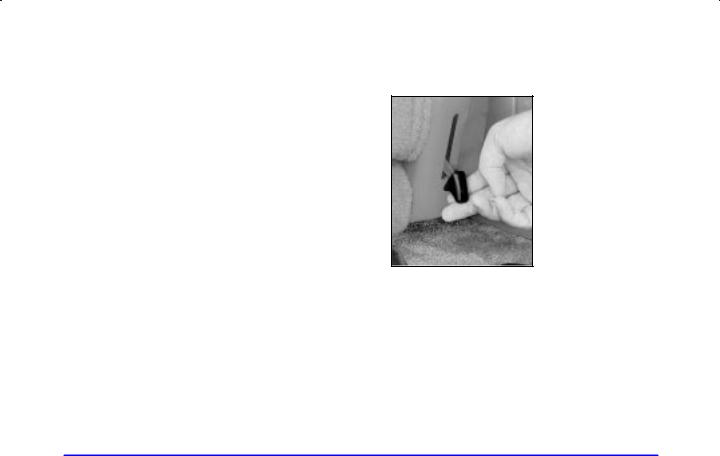
Check to see that the buckles on the driver's side seatback are accessible to the outboard and center occupant and are not under the seat cushions.
If you have removed the head restraints to fold the rear bucket seat, be sure to reinstall them on the seatback after it has been returned to the normal seating position. Be sure to return the head restraints to the upright position on utility models.
Entry to the Third Seat
Suburban/Yukon XL: The passenger's side of the second row 60/40 or rear bucket seats has an easy entry feature. This makes it easy to get in and out of the third seat, if your vehicle has one.
To operate the easy entry seat, turn the release lever, located near the back of the seat rearward.
Tilt the seatback toward the front of the vehicle by pulling the top of the seatback forward.
When you do, the seat bottom will release. Just pull the seat forward until it stops.
Be sure to return the seat to the passenger position when finished. Pull forward and push rearward on the seat to make sure it is locked in place.
Folding the Third Seat
Utility: The seatback of the third seat (if equipped) in utility models also folds down on the floor.
To fold the seatback down, pull up on the release lever, labeled 1, located on the rear of the seatback. Then push the seatback forward.
To return the seat to the passenger position, pull up on the release lever labeled 1 and then pull up on the seatback until it locks into the upright position. Push forward on the seatback to make sure it is locked into position.
1-11

If still more cargo space is desired, the third seat can also be folded and tumbled forward or removed if necessary by pulling up on the release lever labeled 2.
The seat locks into place and does not need to be removed when carrying cargo. See ªRemoving the Third Row Seatsº for utility later in this section for removal instructions.
Suburban/Yukon XL: The seatback of the third seat (if equipped) in Suburban/Yukon XL models also folds down to create more cargo space.
To fold the seatback down, pull up on the release lever, labeled 1, located on the rear of the seatback, then push the seatback forward.
To return the seat to the passenger position, pull up on the release lever and then pull up on the seatback until it locks into the upright position. Push forward on the seatback to make sure it is locked into position.
If still more cargo space is desired, the third seat can also be folded and tumbled forward by using the lever, labeled 2. To return the seats to their original position, reverse the above steps.
Fold and Tilt Feature (Suburban/Yukon XL
Third Seat)
Once the third seatback has been folded down, the entire seat can be tilted forward to create a flat load floor. To do this, you will need to enter the rear cargo area of the vehicle. Make sure the head restraints have been lowered completely.
With the seat folded, unlatch the seat from the floor by pulling up on the lever located under the carrying handle at the rear of the seat labeled 2. Lift the rear of the seat up, off of the floor. You will not be able to unlatch the seat from the floor unless the seatback is folded down.
Tilt the seat fully forward and secure it in place using the support rod located on the underside of the seat, passenger side. Make sure the support rod pin is fully engaged in the lock.
1-12
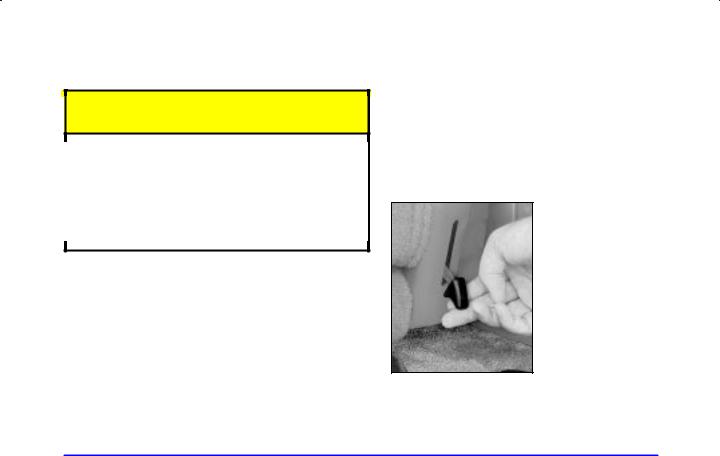
Push and pull on the seat, making sure the support rod is holding it firmly in place. Use the seat in this position only when necessary for additional cargo space.
 CAUTION:
CAUTION:
If the support rod isn't properly engaged, the folded third row seat could come loose in a sudden stop or crash. That could cause injury to people and damage to your vehicle. Always be sure the support rod is properly engaged when the third row seat is folded forward.
To return the seat to its seating position, push forward on the seat and release the support lock rod. Secure the support rod in its stored position on the underside of the seat. Lower the seat to the floor and let the seat drop into place. Lift up on the carrying handle to make sure the seat is locked in place.
Return the seatback to the upright position by pulling up on the release lever labeled 1 before the back can be folded upright. Pull the seatback forward to make sure it is locked into place.
Removing the Third Row Seat
Utility: If your vehicle has third row seating, it can be taken out for more cargo space.
To remove the seat, fully open the rear doors and enter the rear of the vehicle.
Fold the seatback forward into the seat cushion by using the lever labeled 1. The seat cannot be removed unless the seatback is folded.
1-13

To unlatch the seat from the back of the floor, pull up on the release lever labeled 2 at the rear of the seat and lift the rear of the seat up, off of the floor.
Pull on the release lever located in the lower middle to unlatch the seat from the front of the floor and pull the seat out. Use one hand on the release lever and the other on the handle to pull the seat out.
Suburban/Yukon XL: If your vehicle has third row seating, it can be taken out for more cargo space.
To remove the seat, fully open the rear doors and enter the rear of the vehicle.
Fold the seatback forward into the seat cushion by using the lever labeled 1. The seat cannot be removed unless the seatback is folded.
To unlatch the seat from the floor, pull up on the release lever labeled 2 at the rear of the seat and lift the rear of the seat up, off of the floor.
Pull on the strap, labeled 3, at the rear of the seat to release the front seat latches. Then, pull the seat straight back, towards the rear of the vehicle and remove it. There are wheels at the front of the seat to assist you.
Replacing the Rear Seat
Utility: To put the seat back in, place the front of the seat on the load floor facing towards the front of the vehicle. Slide the wheels into the slots on the floor and lock into place using the hooks there. Once the latches are engaged, let the seat drop into place. Release the lever labeled 1 to return the seat to its upright position. Push and pull on the seat to make sure it is locked
into place.
1-14
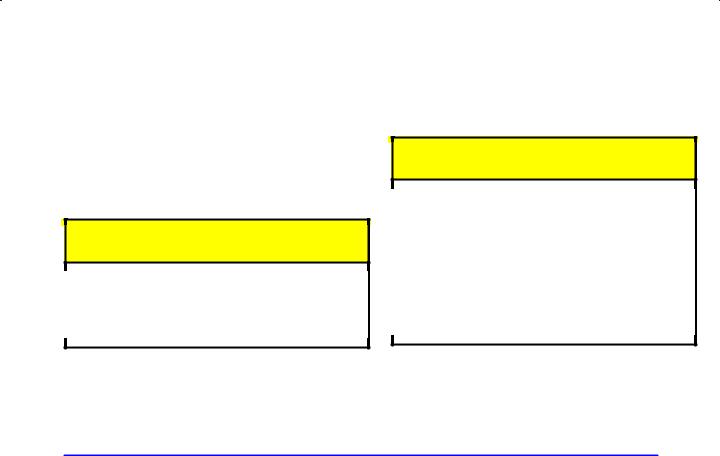
Suburban/Yukon XL: To put the seat back in, place the front of the seat on the load floor, facing the front of the vehicle. While holding the rear of the seat up, use the wheels on the front of the seat to roll it towards the seat hooks in the floor. When the latches are engaged in the hooks, let the seat drop into place. Lift up on the carrying handle to make sure the seat is locked in place.
Raise the seatback into the upright position. Push and pull on the seat to make sure it is locked into place. The seatback cannot be raised to the upright position unless the seat is secured to the floor.
 CAUTION:
CAUTION:
A seat that isn't locked into place properly can move around in a collision or sudden stop. People in the vehicle could be injured. Be sure to lock the seat into place properly when installing it.
Safety Belts: They're for Everyone
This part of the manual tells you how to use safety belts properly. It also tells you some things you should not do with safety belts.
And it explains the air bag system.
 CAUTION:
CAUTION:
Don't let anyone ride where he or she can't wear a safety belt properly. If you are in a crash and you're not wearing a safety belt, your injuries can be much worse. You can hit things inside the vehicle or be ejected from it. You can be seriously injured or killed. In the same crash, you might not be if you are buckled up. Always fasten your safety belt, and check that your passengers' belts are fastened properly too.
1-15

 CAUTION:
CAUTION:
It is extremely dangerous to ride in a cargo area, inside or outside of a vehicle. In a collision, people riding in these areas are more likely to be seriously injured or killed. Do not allow people to ride in any area of your vehicle that is not equipped with seats and safety belts. Be sure everyone in your vehicle is in a seat and using a safety belt properly.
Your vehicle has a light that comes on as a reminder to buckle up. See ªSafety Belt Reminder Lightº in the Index.
In most states and Canadian provinces, the law says to wear safety belts. Here's why: They work.
You never know if you'll be in a crash. If you do have a crash, you don't know if it will be a bad one.
A few crashes are mild, and some crashes can be so serious that even buckled up a person wouldn't survive. But most crashes are in between. In many of them, people who buckle up can survive and sometimes walk away. Without belts they could have been badly hurt
or killed.
After more than 30 years of safety belts in vehicles, the facts are clear. In most crashes buckling up does matter ... a lot!
1-16

Why Safety Belts Work
When you ride in or on anything, you go as fast as it goes.
Put someone on it.
Take the simplest vehicle. Suppose it's just a seat on wheels.
1-17
